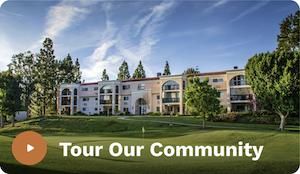Never has an adage like “change is the only constant” applied so perfectly to the timeline of television and how people watch it. Black and white images gave way to Telechrome, and three network channels succumbed to the vast cable enterprise, now rapidly being eclipsed by “streaming” from apps like Netflix, Hulu and Max, to name just a few. It’s the way of the future for content—but it wouldn’t be as easy as changing the channel for Laguna Woods Village.
The broadband telecommunications network that currently delivers cable television to residents was built in 1999. This hybrid fiber-coaxial (HFC) network was deployed globally by cable television operators throughout the 1990s.
Our HFC network is now 25 years old. Equipment throughout the system, including at our “head end” master facility that receives television signals and distributes them over our network, is no longer supported by the manufacturer and replacements are scarce. As equipment continues to degrade, hardware and software failures, system errors and power outages will cause internet and video disruption.
Further, as cable programming costs skyrocket (we pay $5 million per year for current channels) and streaming continues to increase the need for ultra-high-speed internet, a community our size requires a robust network that can support its considerable needs for decades to come. A proposal is going forward.
Broadband Ad Hoc Takes Off
In 2019, the GRF Broadband Ad Hoc Committee (BAHC) contracted The Broadband Group (TBG), a leading telecommunications consulting firm with over 25 years of industry experience, to analyze our system.
Post-pandemic, in 2022, TBG provided two industry-standard solutions in its report, “Broadband Services Pro Forma Scenario Analysis”: splitting the nodes (endpoints over a network that receive, create, store and send data along distributed routes) and replacing our current HFC network with a new fiber-only passive optical network (PON).
All national cable television operators have adopted fiber as the standard going forward; all plan to migrate existing HFC networks to fiber. The industry consensus is that a PON reduces operating costs and allows for greater bandwidth to future subscribers. TBG recommended a phased fiber migration plan.
Subsequently, BAHC directed VMS and TBG to obtain proposals from qualified service providers to detail potential costs and potential business models.
The Timeline Speeds Up
TBG, together with GRF and VMS staff, have researched, collected data from and participated in presentations with service providers to further the goal of bringing community-wide fiber internet to the community:
- December 4, 2023: VMS issued a request for proposal from 14 qualified internet service providers.
- March 1, 2024: Eight potential providers submitted proposals. TBG’s recommendation requires the service provider to build and maintain the network, and provide internet service—but for GRF to own the infrastructure. Only three are willing to agree to this recommendation and have sufficient scale to serve the Village.
- April through August 2024: VMS staff provided updates to BAHC and GRF board, who then provided direction related to the project (closed session).
- September 2024: The potential service providers delivered in-person presentations to BAHC, VMS staff and TBG. All three companies offered similar proposals and have the financial and operational wherewithal to build a network and provide services that will support Laguna Woods Village for decades to come.
Stay tuned for regular updates as the fiber infrastructure project progresses.
To learn more about the community’s fiber network project, watch Laguna Woods Village PC Club Presents: Paul Ortiz, The Future of Broadband in Laguna Woods Village (youtube.com) or receive a detailed white paper, “The Next Generation Technology Project for Laguna Woods Village, California,” by emailing General Manager of Broadband Services paul.ortiz@vmsinc.org.





